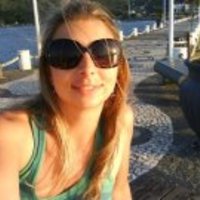Papers by Michael Belmont

IEEE Journal of Oceanic Engineering, 2021
A fundamental property of most sea conditions is that sets of large waves alternate with sets of ... more A fundamental property of most sea conditions is that sets of large waves alternate with sets of smaller waves, known as quiescent periods. Exploiting the quiescent periods can expand the sea states under which the execution of many maritime operations can be considered safe. Building upon the work of Belmont et al., we extend the methodology to fully describe the statistical distribution of the quiescent periods in terms of their time duration using sea spectra derived from current ship readings as well as metocean forecast. This provides the basis for a short- or long-term planning tool that complements deterministic wave prediction technology for executing wave-height-limited maritime operations. The method is evaluated using spectra calculated from field measurements in a dedicated sea trial and from standard parameterized oceanographic forms (JONSWAP and Pearson–Moskowitz).

IEEE Transactions on Geoscience and Remote Sensing, 2021
Conventional X-band radars constitute a convenient cheap source of measurements for deterministic... more Conventional X-band radars constitute a convenient cheap source of measurements for deterministic sea wave profiling and prediction. The radar backscatter measurements, however, suffer from several imperfections such as the effects of larger waves shadowing smaller waves. In order to extract the wave profiles and build a reliable (spectral) sea model, multiple radar scans must be processed. A technique based on 3DFFT has been proven to show promising results and has been implemented in commercially available wave profiling radars. Nonetheless, there are several drawbacks associated with using 3DFFT to determine the phase-resolved spectral coefficients in the sea model from a number of radar scans. In this article, we present an alternative spectral approach that can offer several advantages over 3DFFT in radar wave profiling and prediction. First, it has the ability to directly handle ship movement and radar rotation antenna effects with no approximation, interpolation, or extra cost. Second, it can offer an increase in the output update rate by eliminating repeating computations, which is achieved by its recursive nature (i.e., using past output) and by its multistep architecture. Third, it can be set to readily target the relative spectral components that can best describe the wave field. The proposed technique is evaluated using raw backscatter field data from a dedicated sea trial. A simulation study is also included to gain more understanding about the performance of the proposed technique in particular and radar wave sensing and prediction in general.
OCEANS 2019 - Marseille, 2019
It is well known that in most sea conditions sets of large waves alternate with sets of smaller w... more It is well known that in most sea conditions sets of large waves alternate with sets of smaller waves. These sets of smaller waves are known as quiescent periods. With the new emerging technology of deterministic sea wave prediction (DSWP), it has become possible to predict the occurrence of these quiescent periods and hence exploit them to run safer marine operations. In this work, we present a statistical model that describes the probability distribution of the quiescent periods for a selected threshold height, based on the sea power spectral density. This work compliments the benefits of DSWP and it could serve as a planning tool to assess the favorability of a prevailing or forecasted sea state to carry out specific maritime operations. The presented method is evaluated using simulated sea waves data based on standard oceanographic spectra.
Ann Intern …, 2005
Background: There is concern that exogenous female hormones may worsen disease activity in women ... more Background: There is concern that exogenous female hormones may worsen disease activity in women with systemic lupus ery- thematosus (SLE). Objective: To evaluate the effect of hormone replacement ther- apy (HRT) on disease activity in postmenopausal women with SLE. ...
Many maritime operations can benefit from short-term deterministic sea wave prediction (DSWP). Co... more Many maritime operations can benefit from short-term deterministic sea wave prediction (DSWP). Conventional X-band radars constitute a convenient cheap source of measurements for DSWP. The radar backscatter measurements suffer from several imperfections such as the effect of larger waves shadowing smaller waves. In order to extract the wave profiles and build a reliable sea prediction model, multiple radar scans must be processed. In this paper, we present a new single-wavenumber least-squares spectral algorithm for wave prediction from radar backscatter. The proposed technique is evaluated using field data from a dedicated sea trial.Recorded Presentation from the vICCE (YouTube Link): https://youtu.be/g0ejshY_nhc
2020 6th International Conference on Event-Based Control, Communication, and Signal Processing (EBCCSP)

Journal of Marine Engineering & Technology
Avoidance of phase shift errors in short term deterministic sea wave prediction Avoidance of phas... more Avoidance of phase shift errors in short term deterministic sea wave prediction Avoidance of phase shift errors in short term deterministic sea wave prediction Short term deterministic sea wave prediction (DSWP) offers the promise of considerably extending the operational envelope of many marine activities such as aircraft launch and recovery onto vessels, cargo transfers, station-keeping roles and shuttle tanker activities. A short term prediction model first builds a description of the local sea surface profile then appropriately shifts this in time and space to the prediction site. It is shown that using the discrete Fourier series description conventionally proposed for DSWP implies assumptions about spectral resolution which can give rise to large errors in the shifting process. By reformulating the traditional linearised gravity wave equations it is possible to remove the need for discrete approximations to the shifting process and thus entirely avoid the consequent errors. The resulting shifting algorithms are shown to involve little increase in computational overhead compared to the fully discretised DSWP methods, and thus do not significantly detract from the available prediction times.

Applied Ocean Research
There is a growing practical interest in the ability to increase the sea states at which marine o... more There is a growing practical interest in the ability to increase the sea states at which marine operations can be safely undertaken by exploiting the quiescent periods that are well known to exist under a wide range of sea conditions. While the actual prediction of quiescent periods at sea for the control of operations is a deterministic process, the long term planning of future maritime tasks that rely on these quiescent periods is a statistical process involving the anticipated quiescence properties of the forecasted sea conditions in the geographical region of interest. It is in principle possible to obtain such data in tabular form either large scale simulation or from field data. However, such simulations are computationally intensive and libraries of appropriate field data are not common. Thus, it is clearly attractive to develop techniques that exploit standard wave spectral models for describing the quiescence statistics directly from such spectra. The present study focuses upon such techniques and is a first step towards the production of a computationally low-cost quiescence prediction tool and compares its efficacy against simulations. Two significant properties emerge for a large class of wave spectral models that encompasses the ubiquitous Neumann and Pierson Moskowitz or Bretschneider forms. Firstly, the auto-correlation function of the wave profile that are required to produce the quiescence property can be obtained analytically in terms of standard special functions. This considerably reduces the computational cost making desktop computer-based planning tools a reality. Secondly, for each class of these parametric spectra, the probability of a given number of consecutive wave heights (normalised to the significant wave heights) less than some critical value is in fact independent of absolute wave height. Thus, for a broad class of practically interesting wave spectra all that is required to obtain the statistical distribution of the quiescent periods is simple rescaling.
IEE Proceedings F Radar and Signal Processing
ABSTRACT
IEE Proceedings F Radar and Signal Processing
ABSTRACT
IEEE Transactions on Electrical Insulation
A classical mechanism is described for nasal olfaction based upon the sensing of longwavelength i... more A classical mechanism is described for nasal olfaction based upon the sensing of longwavelength infrared. Results of dielectric measurements associated with the model are described, including the possibility of ferroelectric behavior in some protein gells.
IEEE Transactions on Electrical Insulation
The space-charge-modified transport of two oppositely charged carriers under the influence of a c... more The space-charge-modified transport of two oppositely charged carriers under the influence of a constant applied field is discussed. A Lagrangian approach is adopted to avoid spurious numerical diffusion effects. This paper considers the situation where one of the species is so much less mobile than the other that it may be regarded as effectively at rest.
IEE Proceedings F Radar and Signal Processing
ABSTRACT
IEEE Transactions on Electrical Insulation
ABSTRACT
Proceedings of the Institution of Mechanical Engineers, Part D: Journal of Automobile Engineering
ABSTRACT
Proceedings of the Institution of Mechanical Engineers, Part D: Journal of Automobile Engineering
ABSTRACT
Proceedings of the Institution of Mechanical Engineers, Part C: Journal of Mechanical Engineering Science
An extension of the concept of frequency response is introduced which can be applied to systems d... more An extension of the concept of frequency response is introduced which can be applied to systems described by differential equations whose coefficients vary periodically or almost periodically with time. Such systems are not accessible to traditional frequency response function methods because while the governing equations may be linear in the time domain they are non-linear in frequency. The basic theory of the technique is introduced and results are obtained for a wide range of systems. Time domain solutions are also deduced to complement the spectral development. Numerical results are calculated for an illustrative case that deals with a photochemical problem driven by a solar daylight cycle.
Renewable Energy and Power Quality
The interest of tidal energy exploitation is increasing in recent years promoting the need for de... more The interest of tidal energy exploitation is increasing in recent years promoting the need for development of efficient tidal turbines. This paper investigates the wake states of energy extraction by a new tidal turbine design, the Momentum Reversal Lift (MRL), developed by Aquascientific Ltd with a different method of tidal turbine modelling (body force) using an open source computational fluid dynamics (CFD) code, OpenFOAM.











Uploads
Papers by Michael Belmont